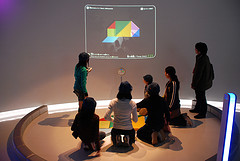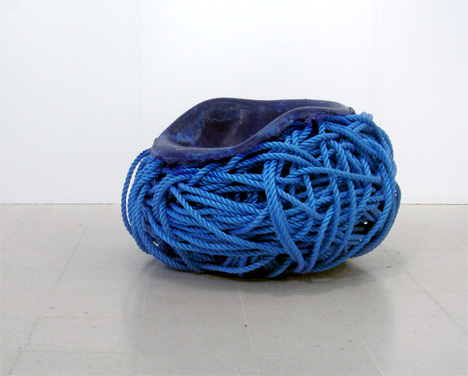
hot seat
glocal blogs
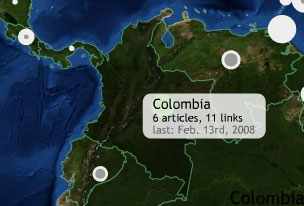
ethan zuckerman and rebecca mackinnon founded globalvoices, a web site that aggregates and translates news from the parts of the world we never hear from. they tackle the immense task through old-fashioned manual labor: volunteer translators and regional editors filter and organize the content, which originates in local-language blogs. it seeks to call attention to non-english-speaking regions of the world while facilitating the spread of local news content and promoting free speech.
pre-medialab
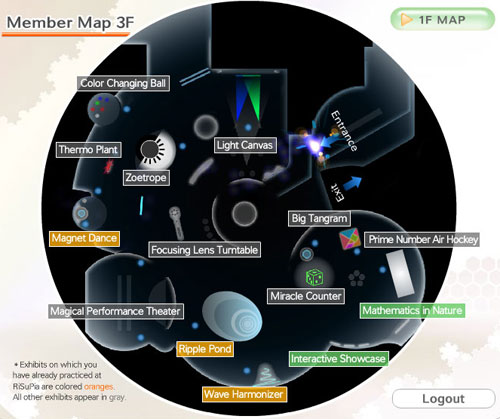
the risupia children’s museum at the panasonic center is a beautifully designed experience that explores math and science concepts through innovative social interfaces. my favorite are ‘big tangram’ and ‘prime number air hockey.’ in the first, children try to match a projected tangram by arranging foam shapes on the ground – which takes a lot of complicated spatial reasoning, not to mention group-work. in the second, children play air hockey with numbers, dividing them with every collision until they become prime and pass through. the other interfaces are hybrid tangible – graphical explorations of light and color, among other phenomena of interest to budding panasonic engineers (see slide show below). the entire experience in the space is recorded and when you leave you are given an id to access the memoir of your personal journey (above).
carpet tag
Construction is immaculate in Japan – every thing is perfectly cut, fitted, joined. It is so perfect that the builders are willing to be associated with their work. Every carpeted room (I saw) features a little tag, the size of a postage stamp, screwed into the corner of the carpeting. The tag bears the name of the installer, the manufacturer, and a batch number for control. When the US mad cow outbreak motivated a computerized meat traceability system, its effectiveness was more about comforting the public than it was about food safety. Given the quality of construction in the US, something like this carpet tag would go a long way to reassure the owner. And, by tacking these to the corner of the floor, it also highlights any errant specks of dirt left behind. Drawing attention to source of a product can also involve the owner in taking a more active role and ultimately investing more value in the craft.
race warcraft
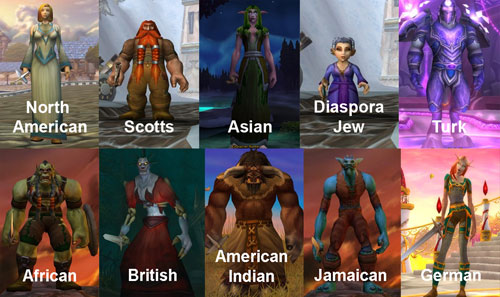
at this year’s alt.chi conference, tyler pace will be presenting Can an Orc Catch a Cab in Stormwind? (doc download) an insight into the roles of race in the massive multiplayer on-line game World of Warcraft. he proposes that the character selection process itself imposes racial (and gender-based) constructs on the game inspired by the largely white male population of players (and game designers). he points out that all character options are depicted as deviations from a white male north-american norm, and other genders and races have fewer permutations the more distant they are from the white male ideal. he peers inside game user forums to reveal that players commonly associate fantasy species with real-world races and ethnicities (above), with greater scorn inflicted on those most different from the overwhelmingly white and male human race. with all of this fantasy the idea of including traditional races and sexes into an alternate world seems to invite racism and sexism – which can only reinforce these ideals in society. why can’t they invent more and stranger types that defy earthly conventions?
sinister streetlight
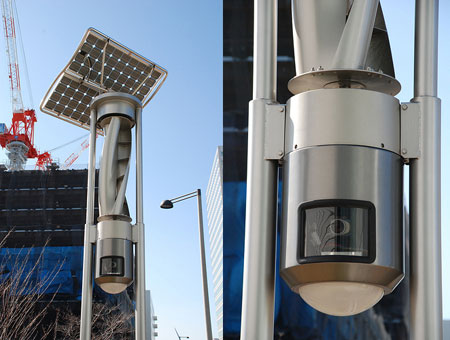
i left out something about the solar and wind-powered streetlights at the panasonic center in tokyo: the company sells a modified version that contains a security camera, with the aim of tracking children on their way to and from school. the ‘Neighborhood Security Sensor Network System‘ detects children carrying an active RFID tag and takes pictures as they pass under each camera-equipped streetlight. parents can receive snapshots of the child’s progress from the comfort of home in case they are too busy to walk the child themselves. is this the first example of eco-surveillance?
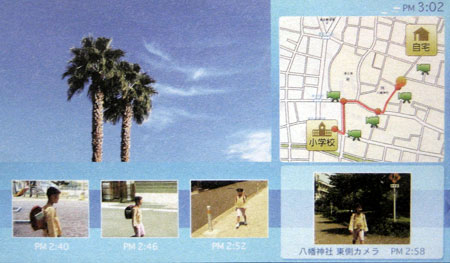
machine sculpture
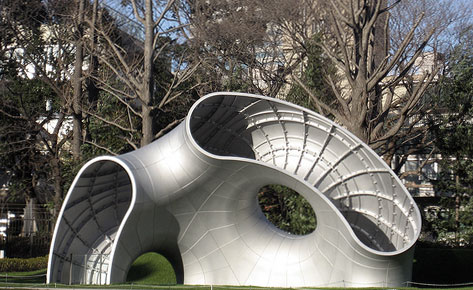
florian claar’s fragment no. 5 – ‘caverna lunaris’ – is displayed in the sculpture garden of tokyo midtown, the most beautiful mall in the world. the enormous sculpture is manufactured to incredible tolerances out of bolted pieces of machined aluminum, an enormous fragment of a toroidal form rugged and ribbed on the inside but soft and smooth on the outside.
touch map
this is another example of a universal design map in the tokyo subway to reveal not only names in braille but also the complex three-dimensional arrangement of platforms with a delicatly raised relief in this bronze plaque.
